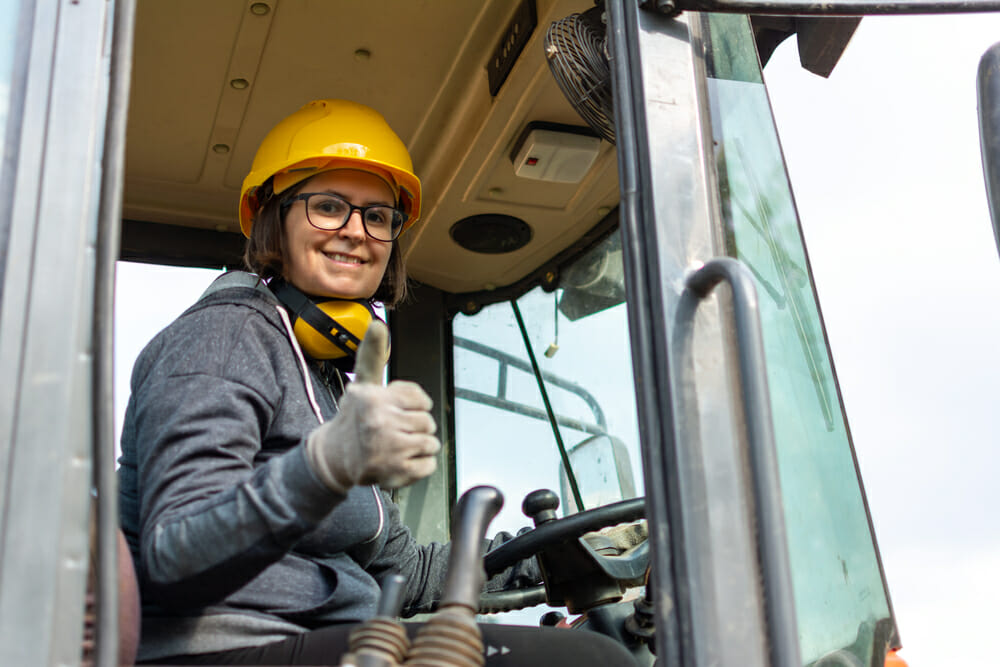
If you work in the construction industry, building machinery might be commonplace in your everyday life. So why not take this opportunity to explore the evolution of building machinery?
Here, we will explore the origins of advanced building equipment, specifically the cherry picker and the crane. This will consider the sustainable changes made recently, using expert commentary to explore the sector today.
Cherry pickers
First and foremost, cherry pickers are invaluable on a construction site. Otherwise known as ariel lifts, these allow professionals to access those areas those hard-to-reach areas. It doesn’t matter which site you enter, you will probably see a worker or two utilising a cherry picker. But where do they come from?
Cherry pickers have a fruitful history. Invented by Jay Eitel in 1944, these machines were originally invented to make picking cherries hassle-free. It must have been tiresome to manually move the ladder between fruit trees, after all. So these weren’t originally intended for use in the construction industry, believe us or not.
Eitel’s cherry pickers have been useful in many industries. Advancements in telecommunications, for example, have been propelled by its invention. This is no doubt due to the fact that professionals can install telephone cables with ease from a mobile vehicle. The list goes on, ranging from the cleaning and film industries to the fire and emergency services.
Today, a cherry picker will look and operate a lot differently from its predecessor. Not only has the appearance and ability of these machines improved, but the motor functions have also evolved to meet consumer demands.
To achieve net zero by 2050, sustainability is at the forefront of UK development. Niftylift, a leading provider of cherry pickers, has invested in the distribution of hybrid aerial platforms. These combine diesel and electric motors, lowering the negative effects of carbon emissions.
Nick Higgins, Chief Operating Officer of Niftylift, comments: “The hybrid cherry pickers are extremely popular with our customers. The low emissions make them ideal for use on restricted sites, in low emission zones, specialist applications and indoor work and will increase service levels and flexibility to our customers across the entire UK.”
Overall, cherry pickers have come a long way since their relatively recent creation. The future looks bright for this piece of machinery as experts continue to improve and adapt their design. What do you think the next generation of cherry pickers will look like?
Cranes
Cranes are also an important piece of building machinery. The origins of this piece of machinery are even more exciting than the cherry picker if we do say so ourselves. Historians have found instances of the crane being used as early as the sixth century BC.
In Ancient Greece, cranes were used to build the stone structures we still admire today, such as the Parthenon. The inventions were also used in popular plays, such as Euripides’ Medea. But enough about ancient history – what does the crane look like now?
Fast forward two thousand years and cranes are just as much of an integral part of any construction site. Today, they’re a regular feature in city skylines, helping to build skyscrapers. Similar to cherry pickers, cranes have also adapted to suit consumer demands for a sustainable nation.
Liebherr, for example, has distributed electric cranes. These cranes do not emit any carbon into an already fragile environment, paving the way towards a carbon-neutral company. In recent months, Liebherr’s cranes have started working on HS2, a high-speed rail network between London and Wigan.
Ainscough Crane Hire has also decided to replace diesel and other natural fuels with hydronated vegetable oil (HVO). This will reduce their carbon emissions by 90 per cent. Peter Gibbs, CEO of this company, comments:
“Our move to HVO fuel is not just a breakthrough moment for the domestic crane hire market – it’s a global first too. Our fuel usage is the most significant aspect of our carbon footprint, accounting for the vast majority of the business’ carbon emissions. By achieving this 95 per cent reduction and undertaking offsetting we have been able to make sure our company will be a carbon-neutral business within the first months of 2022.”
Cherry pickers and cranes may have changed for the better, but the innovations don’t stop there. On any construction site, there will be multiple pieces of machinery that have interesting histories and are sure to have innovative futures. Which piece of equipment do you think will change with the environment in mind?
